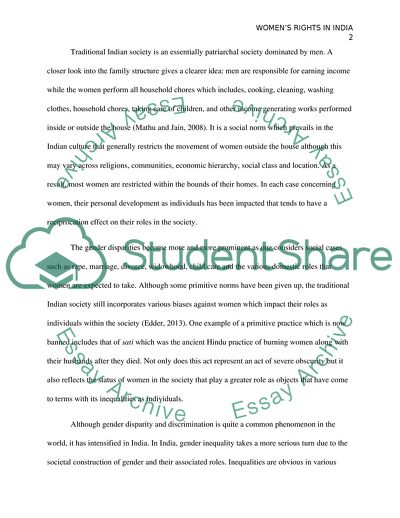Cite this document
(Womens Rights in India Essay Example | Topics and Well Written Essays - 1500 words, n.d.)
Womens Rights in India Essay Example | Topics and Well Written Essays - 1500 words. https://studentshare.org/psychology/1817183-womens-rights-equality-between-the-sexes-and-feminism-in-a-particular-cultureeastern-culture-more-specifically-india
Womens Rights in India Essay Example | Topics and Well Written Essays - 1500 words. https://studentshare.org/psychology/1817183-womens-rights-equality-between-the-sexes-and-feminism-in-a-particular-cultureeastern-culture-more-specifically-india
(Womens Rights in India Essay Example | Topics and Well Written Essays - 1500 Words)
Womens Rights in India Essay Example | Topics and Well Written Essays - 1500 Words. https://studentshare.org/psychology/1817183-womens-rights-equality-between-the-sexes-and-feminism-in-a-particular-cultureeastern-culture-more-specifically-india.
Womens Rights in India Essay Example | Topics and Well Written Essays - 1500 Words. https://studentshare.org/psychology/1817183-womens-rights-equality-between-the-sexes-and-feminism-in-a-particular-cultureeastern-culture-more-specifically-india.
“Womens Rights in India Essay Example | Topics and Well Written Essays - 1500 Words”. https://studentshare.org/psychology/1817183-womens-rights-equality-between-the-sexes-and-feminism-in-a-particular-cultureeastern-culture-more-specifically-india.


